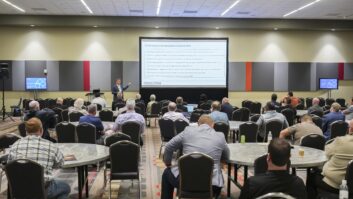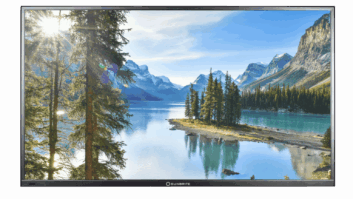International SinoCES was marked by a display of new technologies, as well as discussions of worldwide industry trends and challenges such as the environment and the higher worldwide costs for the CE business.
Those were just some of the issues facing the estimated 70,000 attendees and 300 exhibitors who attended the July 10-13 show, here. The show is a partnership between the China Electronic Chamber of Commerce and the Consumer Electronics Association (CEA), which produces International CES.
During a press briefing at the show, CEA said that in a study it did with GfK Group of Germany that worldwide revenue for consumer electronics will hit $700 billion by 2009, a $42 billion gain over last year, with emerging countries like China, Brazil, Russia and India leading the way.
The study also concluded that by 2009, China will account for nearly 15 percent of global CE revenue, trailing North America with 22 percent and Western Europe with a 16 percent share. CEA president/CEO Gary Shapiro, who headed the group’s SinoCES delegation, said, “The CE growth of China is mirrored by the growth of SinoCES.”
Mobility is the largest CE category worldwide in unit sales and revenue. The study said mobile products will top 1.5 billion units in 2008, lead by portable navigation devices (GPS) with revenue growth of 20 percent, laptops up 15 percent and mobile phones/smartphones up 14 percent. As CEA’s Shapiro noted, “Our future is defined by technology … CE spans and is changing our world.”
The growth of the Chinese market, in consumer purchasing power and as a worldwide manufacturer, is staggering. In a presentation to the CEA, SinoCES Delegation Darrel Ching, commercial officer of the U.S. Embassy in Beijing, said that China’s CE market in 2007 was $63.2 billion, an increase of 13.08 percent over 2006, and that a McKinsey & Company report said China’s CE market will increase by more than 12 percent annual and will reach $125 billion by 2010.
Those bullish estimates were echoed by officials from China’s Ministry of Commerce, the China Electronic Chamber of Commerce and the Qingdao Municipal People’s Republic in a variety of speeches at SinoCES and meetings with the CEA delegation during the show.
But the prospect of growth is the easiest of challenges facing the CE industry both here and worldwide. Higher commodity costs for raw materials and energy, as well as the challenges of being more environmentally friendly as an industry, are two main concerns.
Shapiro addressed the issue of higher energy and manufacturing costs, both here in China and worldwide, by saying, “This is an interesting time in history. Usually in a downturn of the business cycle sales go down as well as [business] costs. But as the economy has gone down the price of oil and raw materials have gone up.”
Shapiro added, “In my 25 year career in this industry I’ve never heard of a price increase in consumer electronics. Prices always go down and quality goes up.” Based on current raw material trends some manufacturers may attempt to raise prices “and we will see if those prices will stick.”
Concerning those challenges that Chinese CE factories will face, with higher salary costs mandated by the state along with these raw material hikes, Shapiro said that it affects China and other major CE manufacturing countries worldwide. “Higher oil prices have substantially increased costs of tanker transportation and ground transportation, and when you include higher costs for various raw material increases for copper and other metals, it will be a challenge for all.”
What is also a challenge for the industry worldwide is the effort by the CE industry to be more environmentally conscious. When asked how the industry should be judged two years from now in its efforts, Shapiro said, “The main categories are the efficient use of energy and the product lifecycle.”
Shapiro remarked that the “rapid increase in energy costs have put more a focus on the energy we use” and that energy efficiency for individual products will be more top of mind in the next two years. “Worldwide and in the U.S. we should agree on energy usage standards” on individual products “to give consumers a reasonable purchasing choice,” he said. The complex problem involves the variety of CE technology involved.
As for product lifecycles, Shapiro noted, “That means how a product is recycled and how a product is made.” Shapiro reiterated previous CEA positions that the industry in the United States wants a national standard on recycling vs. having to attempt to live up to individual local and state rules.
For more coverage of SinoCES see p. 32 and 66 and visit www.TWICE.com.













